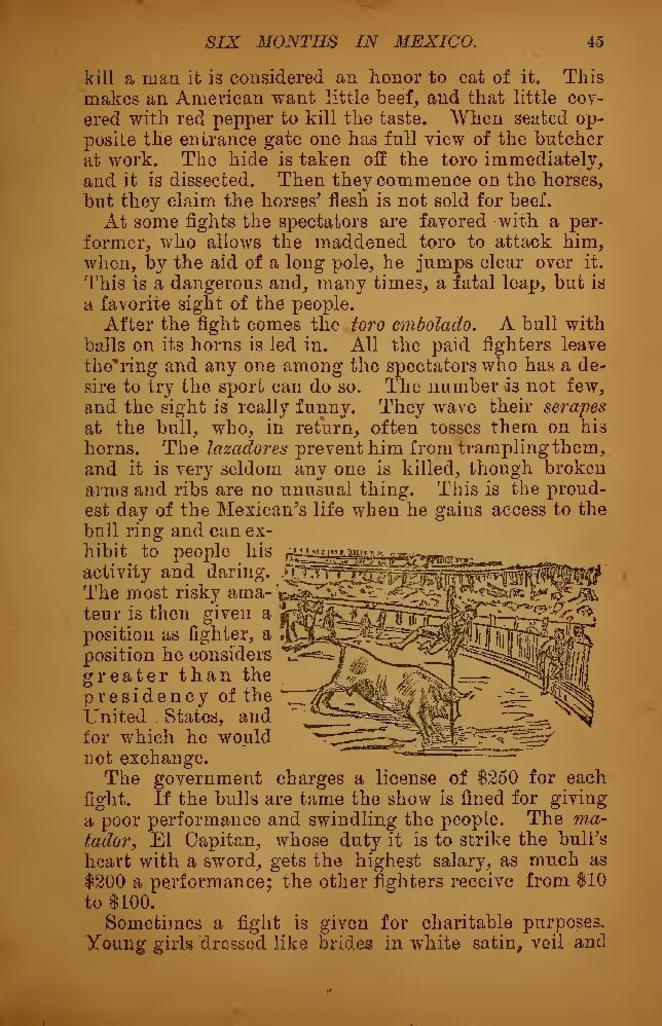kill man it is considered an honor to eat of it. This makes an American want little beef, and that little covered red pepper to kill the taste. When seated opposite the entrance gate one has full view of the butcher at work. The hide is taken off the toro immediately, and it is dissected. Then they commence on the horses, but they claim the horses' flesh is not sold for beef.
At some fights the spectators are favored with a performer, who allows the maddened toro to attack him, when, by the aid of a long pole, he jumps clear over it. This is a dangerous and, many times, a fatal leap, but is a favorite sight of the people.

After the fight comes the toro embolado. A bull with balls on its horns is led in. All the paid fighters leave the ring and any one among the spectators who has a desire to try the sport can do so. The number is not few, and the sight is really funny. They wave their serapes at the bull, who, in return, often tosses them on his horns. The lazadores prevent him from trampling them, and it is very seldom any one is killed, though broken arms and ribs are no unusual thing. This is the proudest day of the Mexican's life when he gains access to the bull ring and can exhibit to people his activity and daring.
The most risky amateur is then given a position as fighter, a position he considers greater than the presidency of the United States, and for which he would not exchange.
The government charges a license of $250 for each fight. If the bulls are tame the show is fined for giving a poor performance and swindling the people. The matador, El Capitan, whose duty it is to strike the bull's heart with a sword, gets the highest salary, as much as $200 a performance; the other fighters receive from $10 to $100.
Sometimes a fight is given for charitable purposes. Young girls dressed like brides in white satin, veil and
